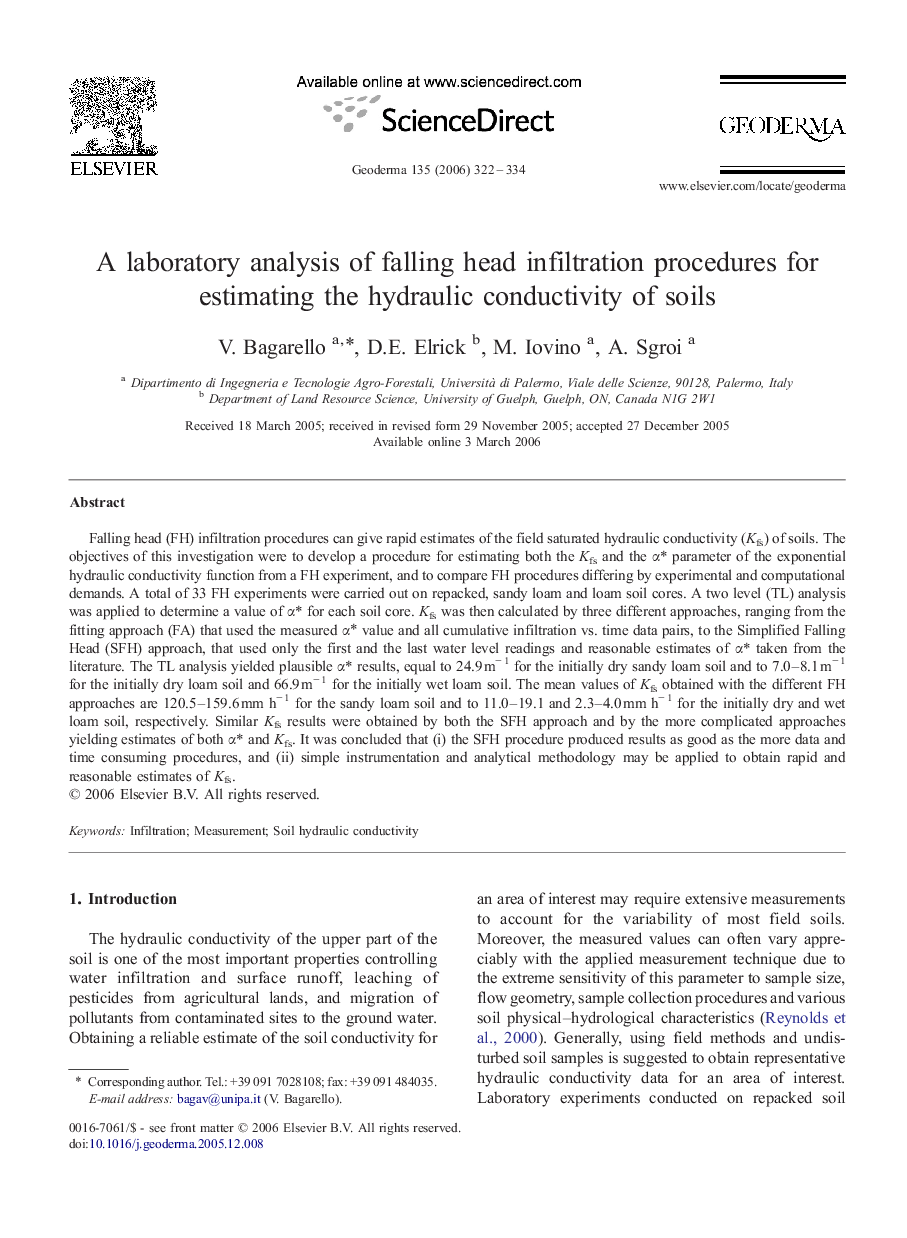| Article ID | Journal | Published Year | Pages | File Type |
|---|---|---|---|---|
| 4575731 | Geoderma | 2006 | 13 Pages |
Falling head (FH) infiltration procedures can give rapid estimates of the field saturated hydraulic conductivity (Kfs) of soils. The objectives of this investigation were to develop a procedure for estimating both the Kfs and the α⁎ parameter of the exponential hydraulic conductivity function from a FH experiment, and to compare FH procedures differing by experimental and computational demands. A total of 33 FH experiments were carried out on repacked, sandy loam and loam soil cores. A two level (TL) analysis was applied to determine a value of α⁎ for each soil core. Kfs was then calculated by three different approaches, ranging from the fitting approach (FA) that used the measured α⁎ value and all cumulative infiltration vs. time data pairs, to the Simplified Falling Head (SFH) approach, that used only the first and the last water level readings and reasonable estimates of α⁎ taken from the literature. The TL analysis yielded plausible α⁎ results, equal to 24.9 m− 1 for the initially dry sandy loam soil and to 7.0–8.1 m− 1 for the initially dry loam soil and 66.9 m− 1 for the initially wet loam soil. The mean values of Kfs obtained with the different FH approaches are 120.5–159.6 mm h− 1 for the sandy loam soil and to 11.0–19.1 and 2.3–4.0 mm h− 1 for the initially dry and wet loam soil, respectively. Similar Kfs results were obtained by both the SFH approach and by the more complicated approaches yielding estimates of both α⁎ and Kfs. It was concluded that (i) the SFH procedure produced results as good as the more data and time consuming procedures, and (ii) simple instrumentation and analytical methodology may be applied to obtain rapid and reasonable estimates of Kfs.
